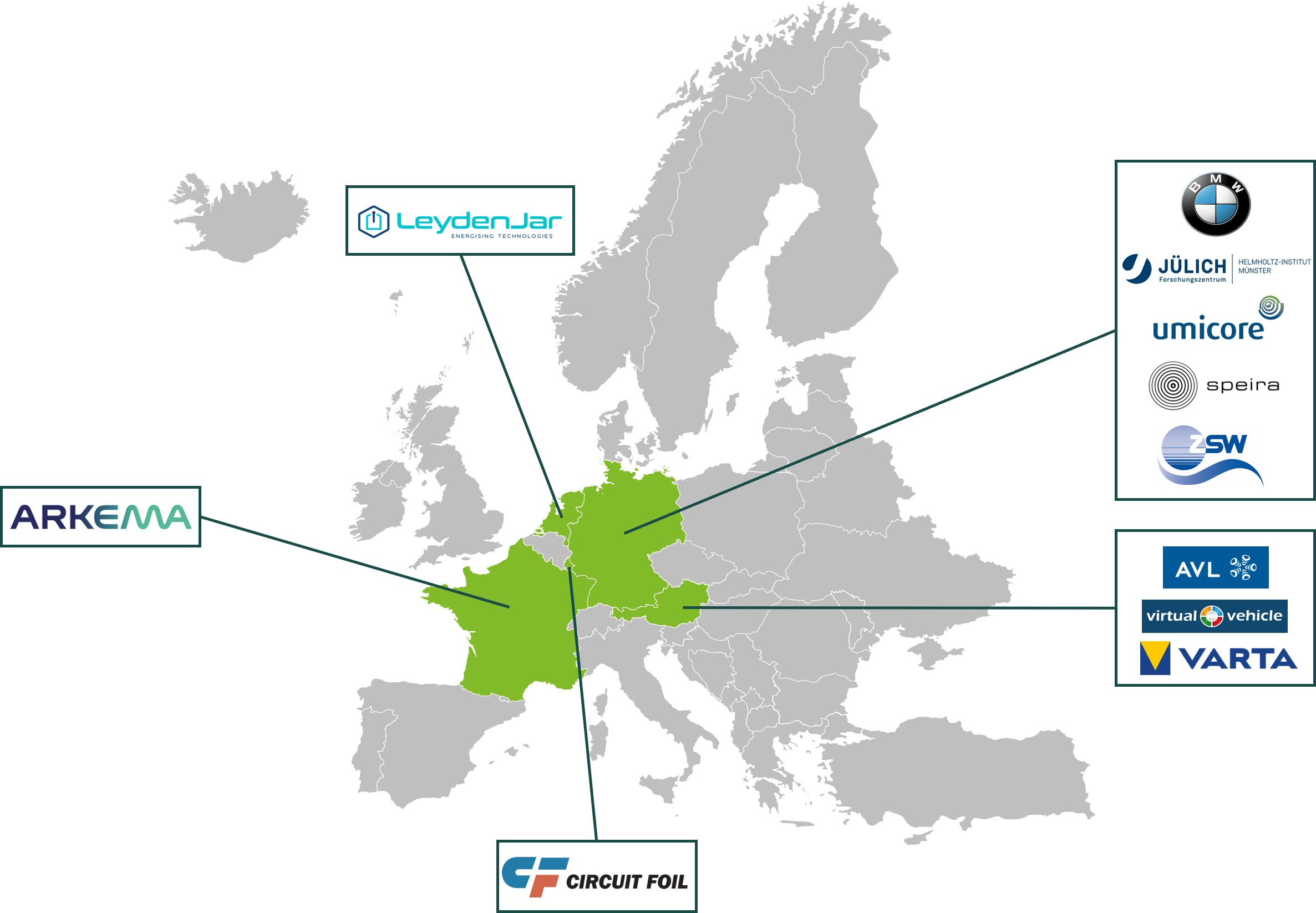The Project
Project Key Facts
Project Start: July 2022 | Project End: December 2025 | Duration: 42 Months
The Challenges
The market for electromobility is growing steadily, series production of battery electric vehicles (BEVs) is in full swing, and OEMs are introducing BEVs in their product portfolio. Unfortunately, the lithium-ion cell technology that powers these vehicles is still not supplied by the European industry. Moreover, while lithium-ion technology is the path to greener and more sustainable mobility and other mobile applications, the cell manufacturing process is still very energy-consuming and uses environmentally harmful substances.

Our Vision
The greenSPEED project provides solutions for new sustainable electrode and cell manufacturing processes with reduced energy consumption, lower carbon footprint and ZERO emissions of Volatile Organic Compounds (VOCs). greenSPEED aims to secure Europe’s leadership in the production of batteries with a lower carbon footprint by improving production processes and establishing them in Europe.
Our Mission
greenSPEED will address two main drawbacks of current battery cell production techniques: The high energy consumption of the individual production steps, and the introduction of new production processes that do not require organic casting solvents. Both, in combination with the increase in energy density, will lead to a significant reduction in the cost of lithium-ion cells.
Our Composite Cathode
The composite cathode, based on Ni-rich NMC, is to be manufactured by scalable roll-to-roll dry electrode coating process, that fully removes the use of casting-solvents and eliminates the need of energy-intense drying-, condensate and transportation process required in state-of-the-art electrode fabrication.
Our High-Capacity Pure-Silicon Anode
The high-capacity pure-silicon anode is to be manufactured taking full advantage of our innovative process based on Microwave-Assisted Plasma Enhanced Chemical Vapor Deposition (MW-PECVD), which deposits porous silicon directly on the copper current-collector starting from locally produced silane gas (SiH4).
Our Modelling and Simulation Techniques
The use of advanced modelling and simulation techniques, including digital twins, artificial intelligence and machine learning will be used to predict and optimise cell performance in early development stages and support the cell production process by virtually assessing the influence and importance of production parameters. This will minimise the number of experiments and accelerate the optimisation steps in electrode production.
Our Consortium
greenSPEED represents a unique blend of leading expertise and knowledge from the automotive industry, SMEs and centres of excellence from five different countries to further develop and combine European skills and know-how and thus strengthen Europe’s leadership in battery production. The consortium covers the entire RTD chain and includes seven large industry participants, three research institutes and one SME.

